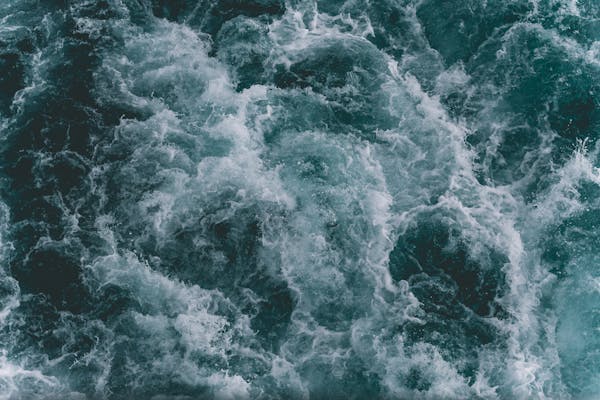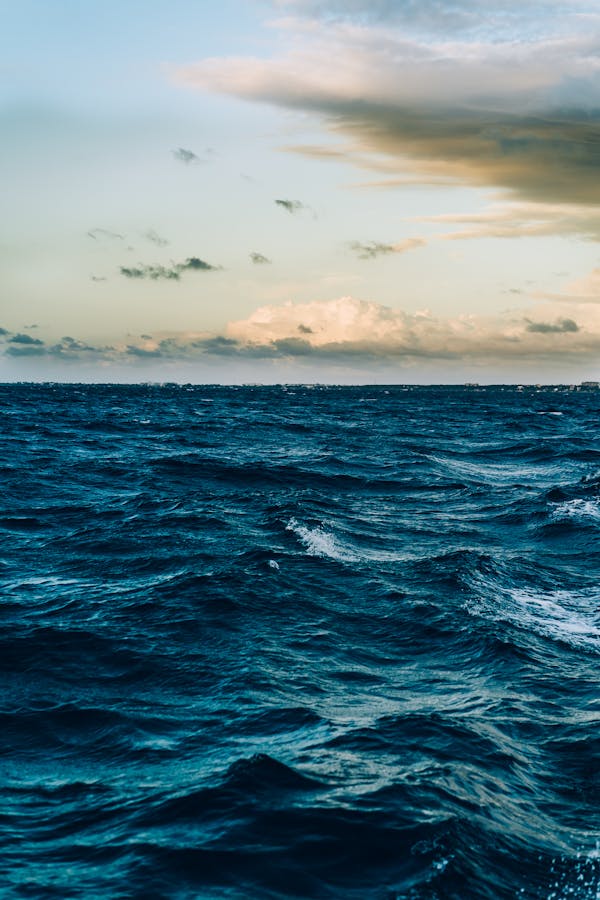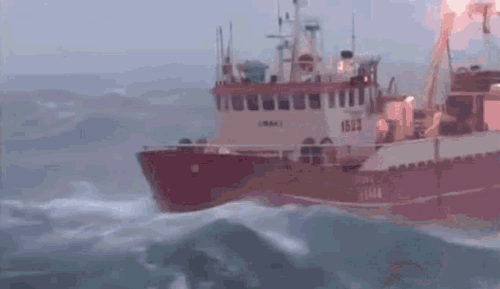

 Online Scuba Lessons |
 Online Nitrox Lessons |
Heavy Weather
Scuba Diving
Dive Boats



Sooner or later everyone who spends time on or in the ocean is going to get a taste of what the old salts referred to as "Heavy Weather". Defining it is another story entirely. The term has a special significance for me, as a scuba instructor and Dive Master, because the conditions it describes can be so varied, and their consequences for many scuba divers so potentially hazardous.
The definition of "Heavy Weather" for dive boats is really based on weather considerations for safe diving, not just safe boating. It is not about boat handling skills, "guts", or the seaworthiness and strength of the boat in the face of storm, nor should it be based on how tightly the charter schedule is booked.
It is about the safety of scuba divers, many of whom are students. The boats that we use are much tougher than we are! With that in mind, heavy weather exists any time the sea or weather conditions pose an unusual hazard to divers. That's anytime there are adverse sea conditions in evidence, likely, or expected for the duration of the time divers are in the water. This has to include wind against current situations, wave or swell conditions, strong surge in sheltered areas, and swift surface or bottom current. As a dive master, I have to make the assessment for the standpoint of a diver in the water. Also, the ability of the diver, the diver's recent experience, and weather or not I feel confident that, if needs be, I could make a successful rescue.

The old saying that the boat is stronger than the crew is doubly true for divers. Not only is the dive master charged with a higher responsibility than just getting the divers to the dive site in one piece, but divers are particularly vulnerable to injury even in relatively moderate boating weather. For instance, a ride that's likely to turn everyone but the hardiest aboard, a delicate pea green can be easy on the boat, but a poor prelude to safe diving.
Seasickness is terribly debilitating, as anyone who's ever been there will be glad to tell you. It is said that the first day, you are afraid you're going to die. The second day you are afraid that you might live. Worse than that, it is an extremely dehydrating condition. As a result, it not only decreases the diver's ability to function, but also increases the risk of decompression sickness and hypothermia.
It is important for dive masters to remember that many divers are just not comfortable on boats, and a day's seasickness is no recommendation for altering the opinion. It's even worse for students who are a bit anxious about dives.
Seasickness aside, the effect of even "light" heavy weather on the sea itself is a source for real concern. Waves build up, as we know, from the action of the wind over the sea's surface, forming breakers as they approach shallower water. While we are obviously not going to be diving in heavy surf, the swells from an offshore storm, augmented by local winds, can be very dangerous to divers on the deck of the boat, or even deadly to divers in the water.
Divers need to exercise special attention to tank and gear management when the weather gets rough. Gear can get washed over board. Tanks falling, sliding, or rolling can lead to severe injuries. The action of the boat can also lead to problems for divers gearing up who are thrown off balance while wearing weights and a tank. A good rule to follow is to make sure that fins are put on at the exit point, not before. Stay close to your buddy and stay seated until it's your turn at the gate. A simple miscue can turn into a disastrous chain reaction.
Even more serious problems arise when divers are finished with the dive and boarding the boat. boarding ladders become nightmares when the boat is pitching up and down and back and forth. It is often the weight of the diver that stabilizes the ladder. As a result, a diver who misses the grab is likely to get smacked. Fixed platforms have their hazards too. An ill timed grab to the platform can result in the platform coming down on top of the diver.
Another, problem of heavy swells is one that most divers would never give a second thought (unless, of course, they were ...ahem... trained by me!). A large wave passing overhead creates a rapid change in depth and at the diver's current depth. Think about it - If a diver is at 80 feet and the surface has a 10 foot swell - the diver is at 80 feet, 90 feet, 80 feet, 90 feet, etc. This has the effect of "pounding" the nitrogen into the body, which as we know, creates several other problems. Also, buoyancy control can be lost very easily, especially at shallower depths where the physics changes of 10 feet are more drastic.
Fortunately, most if the dive trips have been good, if not excellent, weather. but there have been a few over the years, that I've had to abort the planned dive site because of the sea state. Once, in San carlos, Mexico, I aborted a trip to the wrecks because of heavy swells. All of the divers understood and respected my decision save one. This guy was so irritated at me that he hasn't been on a trip since then. But...He is still alive.
Try to remember that the dive master has that title because of his or her training and experience. And that there are a lot more things to consider when selecting a dive site for safe diving.
Dive ya later...
Bwana
![]()

Aquastrophics Dive & Travel
(928) 680 - DIVE (3483)